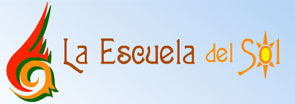- Home
- Accommodation
- Activities
- Area Info
- Maps
- Photo Galleries
- Real Estate
- Travel
Extinct Animals
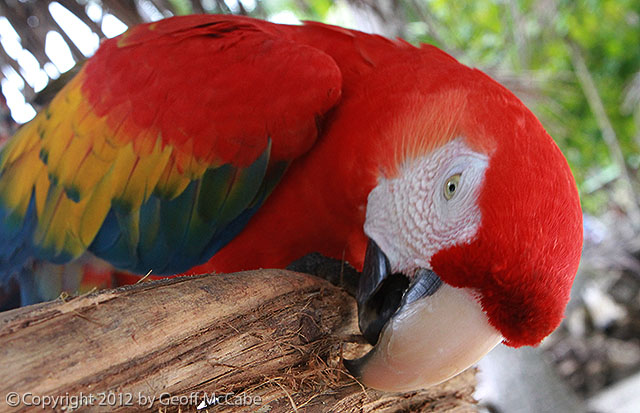
List of Animals Now Extinct in the Southern Nicoya Peninsula
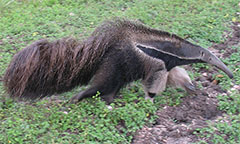 Giant Anteater – The giant anteater is now listed as an extinct species in Costa Rica. They were last seen in Corcovado National Park and in La Selva and the Santa Rosa National Park about two decades ago. Also owing to the fact that these creatures were extremely noticeable, they couldn’t withstand the onslaught of hunting and an ever-increasing loss of habitat. Though counted in the extinct category now, these animals were spotted in the lowland regions on slopes and open jungle habitats. The same species ranges from Mexico down to Brazil, so theoretically they could be brought back to Costa Rica. But, the country still has a way to go towards protecting animals like this from poachers, and even a large virgin rainforest area such as the Osa Peninsula may not be large or safe enough to re-introduce them at this time. In the Southern Nicoya Peninsula, the giant anteater has probably been extinct for 50-100 years. (Note: I spoke with two people who have actually seen this animal recently in the Nosara River reserve, so perhaps it’s not totally extinct in Costa Rica, but certainly their numbers are too few to repopulate without human assistance.)
Giant Anteater – The giant anteater is now listed as an extinct species in Costa Rica. They were last seen in Corcovado National Park and in La Selva and the Santa Rosa National Park about two decades ago. Also owing to the fact that these creatures were extremely noticeable, they couldn’t withstand the onslaught of hunting and an ever-increasing loss of habitat. Though counted in the extinct category now, these animals were spotted in the lowland regions on slopes and open jungle habitats. The same species ranges from Mexico down to Brazil, so theoretically they could be brought back to Costa Rica. But, the country still has a way to go towards protecting animals like this from poachers, and even a large virgin rainforest area such as the Osa Peninsula may not be large or safe enough to re-introduce them at this time. In the Southern Nicoya Peninsula, the giant anteater has probably been extinct for 50-100 years. (Note: I spoke with two people who have actually seen this animal recently in the Nosara River reserve, so perhaps it’s not totally extinct in Costa Rica, but certainly their numbers are too few to repopulate without human assistance.)
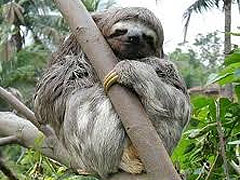 Three Toed Sloth – The three-toed sloth is a very common animal in some parts of Costa Rica, including areas of “dry tropical forest” such as we have in the Southern Nicoya Peninsula. According to MINAE, this animal never existed in the area, but they are wrong about that and in fact it has been seen at least twice in the last few years. Once in Delicias near to the cemetary, where one was found climbing on a fence post. The second was seen by a wildlife expert, crossing the road near to Playa Las Manchas in Montezuma. Although considered extinct in this area, there are probably a few still around, and there are viable populations north of Paquera in the Naranjo area, so theoretically they could at some point begin to expand south again, especially if the rains in the area increase due to global warming and reforestation efforts. Although sloths are considered a “lazy” animal, in areas where they are living, they’re often the most biologically successful species in the jungle, measured by the “mass per hectare” of sloths versus every other type of animal. In some places, up to six per hectare can be found! Sloths are also, pound-for-pound, possibly the cutest animal in the rainforest, despite having resident populations of moths, and algae living on them! They’re also the gentlest species. Wild sloth adults and young alike can held without fear, since the three-toed sloth is one of the few animals that doesn’t attack when picked up by humans.
Three Toed Sloth – The three-toed sloth is a very common animal in some parts of Costa Rica, including areas of “dry tropical forest” such as we have in the Southern Nicoya Peninsula. According to MINAE, this animal never existed in the area, but they are wrong about that and in fact it has been seen at least twice in the last few years. Once in Delicias near to the cemetary, where one was found climbing on a fence post. The second was seen by a wildlife expert, crossing the road near to Playa Las Manchas in Montezuma. Although considered extinct in this area, there are probably a few still around, and there are viable populations north of Paquera in the Naranjo area, so theoretically they could at some point begin to expand south again, especially if the rains in the area increase due to global warming and reforestation efforts. Although sloths are considered a “lazy” animal, in areas where they are living, they’re often the most biologically successful species in the jungle, measured by the “mass per hectare” of sloths versus every other type of animal. In some places, up to six per hectare can be found! Sloths are also, pound-for-pound, possibly the cutest animal in the rainforest, despite having resident populations of moths, and algae living on them! They’re also the gentlest species. Wild sloth adults and young alike can held without fear, since the three-toed sloth is one of the few animals that doesn’t attack when picked up by humans.
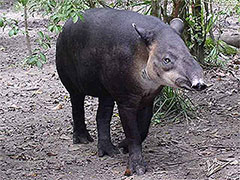 Tapir – Tapirs are known to play a significant role in maintaining the tropical region’s bio diversity. The species is now almost extinct in South and Central America owing to destruction of their habitats and increased poaching. Since they are immediately affected by a change in the habitat and human intrusion, these are one of the worst hit animals in Costa Rica. Other than destruction of their habitat and fragmentation of their settings, illegal encroachment into their territory by farmers and loggers has also led to a drastic depletion in their numbers.
Tapir – Tapirs are known to play a significant role in maintaining the tropical region’s bio diversity. The species is now almost extinct in South and Central America owing to destruction of their habitats and increased poaching. Since they are immediately affected by a change in the habitat and human intrusion, these are one of the worst hit animals in Costa Rica. Other than destruction of their habitat and fragmentation of their settings, illegal encroachment into their territory by farmers and loggers has also led to a drastic depletion in their numbers.
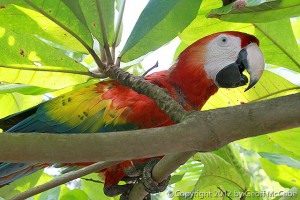 Scarlet Macaw – It’s a terrible crime against nature that one of the most beautiful birds in the world, which used to be very common in the Southern Nicoya Peninsula, is now extinct in this area! Apparently they were all captured for the pet trade or even killed for food back when European settlers came to the area. It’s almost unfathomable, the brutish stupidity of people who lived back in that time. They would do inane things like cutting down an entire tree when a nest of Macaws was spotted, hoping that a few of the babies would survive the crash. The favorite food of the Scarlet Macaw is the common beach almond tree, which is all over the beaches from Montezuma to Cabuya and in Malpais, Santa Teresa, etc, all the way up and down the coasts of Costa Rica. In areas like the Osa Peninsula, flocks of these magnificent creatures fly around, nearly as common as pigeons. Although technically extinct in this part of the country, two reintroduction programs are working to bring them back to the area (and described below.)
Scarlet Macaw – It’s a terrible crime against nature that one of the most beautiful birds in the world, which used to be very common in the Southern Nicoya Peninsula, is now extinct in this area! Apparently they were all captured for the pet trade or even killed for food back when European settlers came to the area. It’s almost unfathomable, the brutish stupidity of people who lived back in that time. They would do inane things like cutting down an entire tree when a nest of Macaws was spotted, hoping that a few of the babies would survive the crash. The favorite food of the Scarlet Macaw is the common beach almond tree, which is all over the beaches from Montezuma to Cabuya and in Malpais, Santa Teresa, etc, all the way up and down the coasts of Costa Rica. In areas like the Osa Peninsula, flocks of these magnificent creatures fly around, nearly as common as pigeons. Although technically extinct in this part of the country, two reintroduction programs are working to bring them back to the area (and described below.)
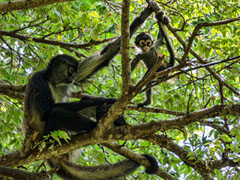 Spider Monkey – Spider Monkeys are still around in many parts of Costa Rica, such as the Osa Peninsula or Tortuguero, where they can be spotted fairly easily. Their feet look nearly identical to their hands, and their tails are incredibly dexterous, really almost a fifth hand. One can hardly imagine what possessed people to kill them all off, since they are so harmless and fun to watch. I have been told that they are better tasting than the area’s other two monkeys, and early settlers killed them for food, and also captured them as pets. Some also killed any “bush meat” they could in order to feed their dogs. What a tragic waste. Luckily, there’s hope for them, since they are being brought back to the area with a reintroduction program in Curu Park (more details below.)
Spider Monkey – Spider Monkeys are still around in many parts of Costa Rica, such as the Osa Peninsula or Tortuguero, where they can be spotted fairly easily. Their feet look nearly identical to their hands, and their tails are incredibly dexterous, really almost a fifth hand. One can hardly imagine what possessed people to kill them all off, since they are so harmless and fun to watch. I have been told that they are better tasting than the area’s other two monkeys, and early settlers killed them for food, and also captured them as pets. Some also killed any “bush meat” they could in order to feed their dogs. What a tragic waste. Luckily, there’s hope for them, since they are being brought back to the area with a reintroduction program in Curu Park (more details below.)
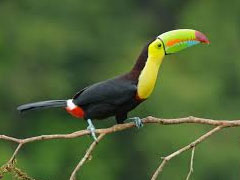 Toucan – The Toucan is an extinct bird species in this part of Costa Rica since they were increasingly hunted or captured by people. Since their primary habitat is rainforests, these creatures have also been affected by the depletion of forest resources and loss of their habitat due to human encroachment. For a while, a man lived in Santa Teresa, where Hotel Casa Azul now stands, and had his own unofficial reintroduction program, but today there are none at all left in the area. Probably the closest populations are near the mouth of the Tempisque River to north. This amazingly beautiful bird is also highly intelligent, and is a ruthless killer, eating baby mammals also is known to pluck the eyeballs out of other birds when given the opportunity. Life in the jungle is beautiful, but can be harsh when judged through the rose-tinted lenses of human morality.
Toucan – The Toucan is an extinct bird species in this part of Costa Rica since they were increasingly hunted or captured by people. Since their primary habitat is rainforests, these creatures have also been affected by the depletion of forest resources and loss of their habitat due to human encroachment. For a while, a man lived in Santa Teresa, where Hotel Casa Azul now stands, and had his own unofficial reintroduction program, but today there are none at all left in the area. Probably the closest populations are near the mouth of the Tempisque River to north. This amazingly beautiful bird is also highly intelligent, and is a ruthless killer, eating baby mammals also is known to pluck the eyeballs out of other birds when given the opportunity. Life in the jungle is beautiful, but can be harsh when judged through the rose-tinted lenses of human morality.
Scarlet Macaw Restoration Programs
Curú – In 1999, Amigos de las Aves, a Costa Rican conservation body started a unique Scarlet Macaw restoration program in the Curú National Wildlife Refuge. About a dozen Scarlet Macaws were released and today they are foraging on their own in the wild. The survival rate is approximately consistently each year. In 2004 a couple of young birds between 4-5 months of age were spotted flying along with the entire flock. This is the first instance of successful breeding after the reintroduction initiative in Costa Rica. Currently, the macaws can be spotted in the wildlife refuge and are often seen near the Curu coast. More macaw releases are planned in the hope of bringing their population to a healthy count in the area, and perhaps within a few decades, they will expand their range all the way through Montezuma and Cabuya, down into Cabo Blanco National Park, where they will be the safest from the hazards of human civilization.
Barcelo Resort – A second reintroduction program is at the Barcelo resort on the shores of Tambor Bay, where several mated pairs have been released. These birds can sometimes be seen on the main road around the Tambor airport. Amigos de las Aves originally intended them to be set free to fend for themselves, but Barcelo decided to continue to feed them, so although they are free to come and go as they please, these very intelligent birds don’t stray too far from their feeding area at the resort.
Spider Monkey Re-introduction Program
Curu National Park’s “Set Us Free” Project includes the reintroduction of the Spider Monkey in a remote area of the wildlife refuge. The Spider Monkey was driven to extinction on the Nicoya Peninsula (owing to hunting activity for the exotic pet trade and their meat) and loss of habitat primarily due to logging activities). This initiative aims to develop a plan for implementing successful programs channeled towards the reintroduction of the species in the wild. Several Spider Monkeys are foraging independently and several pairs have successfully reproduced in the refuge in recent years. Future releases are in the planning stages and a research program is being developed for the Spider Monkeys. A significant aspect of this program is to get the monkeys used to a pre release cage away from human contact. Surprisingly, the biggest problem these released monkeys face now is their own intelligence and laziness! The first group released in Curu Park quickly discovered how easy it was to stand at the roadside and beg for food from tourists. All day they would disrupt traffic, preferring a hand-out of Cheetos and Snickers Bars to the hard work of searching for their native food. They were re-captured and released much farther from the road, where they remain today. It must be assumed that someday, as their numbers increase, they will expand their range and find their roadside buffet again, but until then, the only way to see them is to hike the spider monkey trail at Curu.
Great Stuff

Clandestina Restaurant
My new favorite restaurant, Clandestina is not to be missed by food lovers staying anywhere near to Montezuma. Established in March 2015, Clandestina is the new kid on the block. The Oregon/Tico collaboration is a winner among locals and travelers alike, with artisan craft beers, made onsite by Butterfly Brewing Co. and delicious, exciting […]

